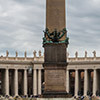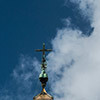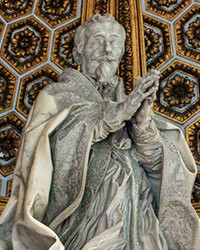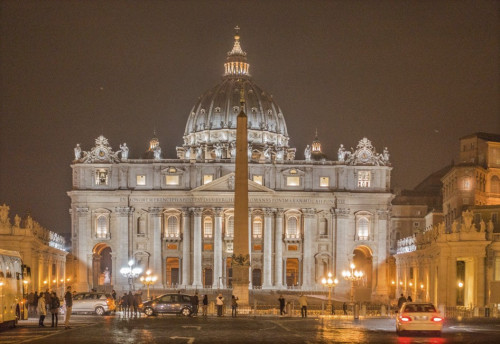
Vaticano Obelisk in the central point of St. Peter's Square
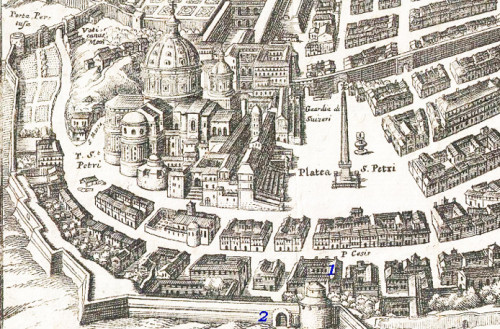
Detail of the map by AntonioTempesta showing Piazza di S.Pietro, ca 1593
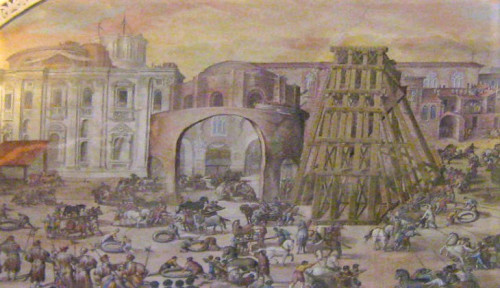
Fresco in the Vatican Library, setting of the Vaticano obelisk
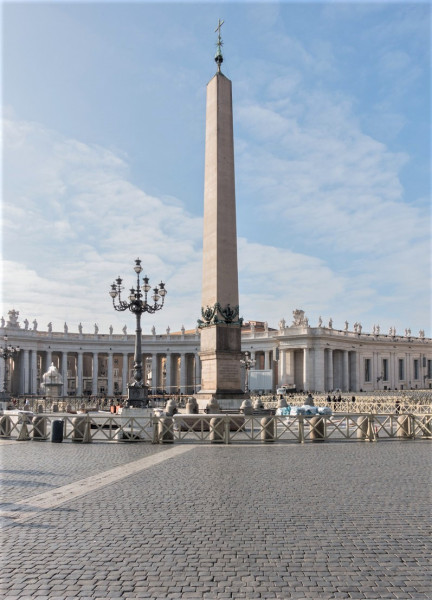
Vaticano Obelisk, St. Peter's Square
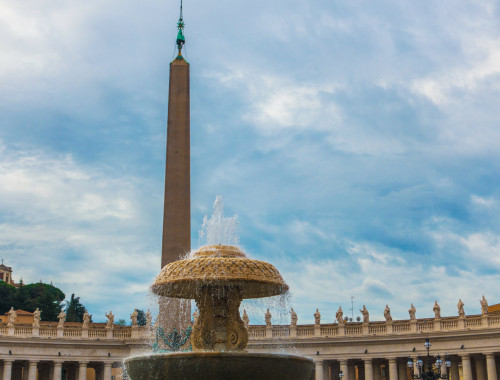
Vaticano Obelisk and one of the fountains in St. Peter's Square
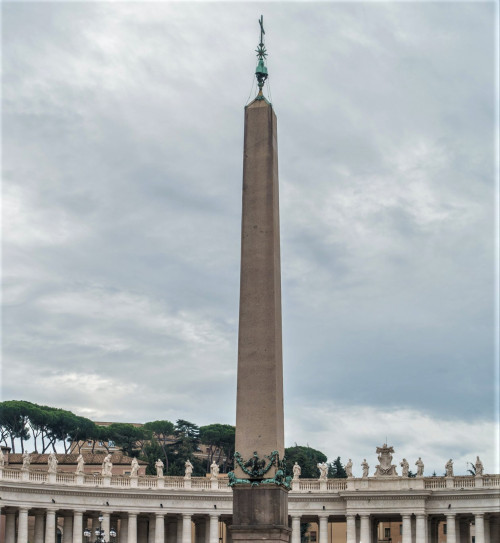
Piazza di San Pietro, Vaticano Obelisk
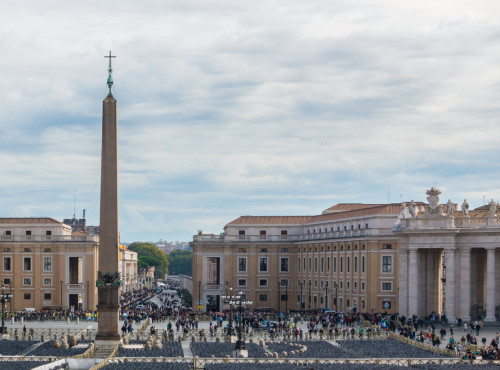
Vaticano Obelisk, in the background via della Conciliazione
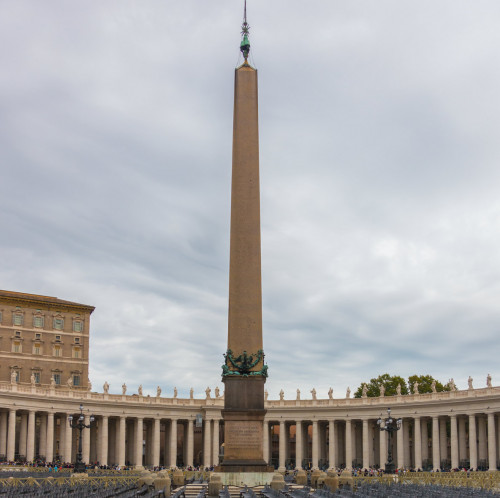
Vaticano Obelisk against the background of the colonnade designed by Gian Lorenzo Bernini

Obelisk Vaticano, inscription commemorating Pope Sixtus V.
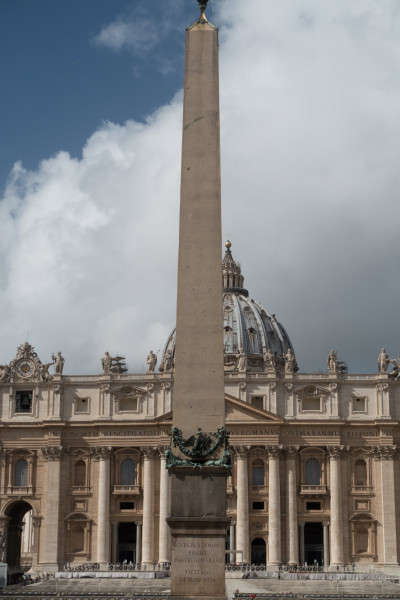
Obelisk Vaticano, Piazza di San Pietro

Obelisk Vaticano, its top decorated with elements of the coat of arms of Pope Alexander VII and a cross
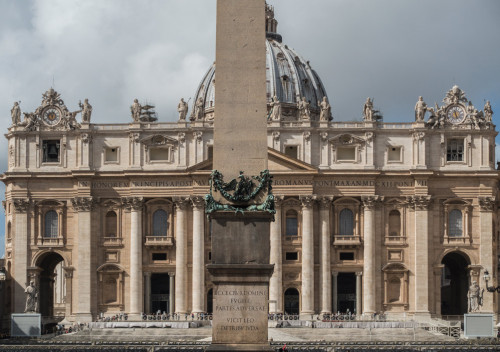
Obelisk Vaticano against the facade of the Basilica of San Pietro in Vaticano
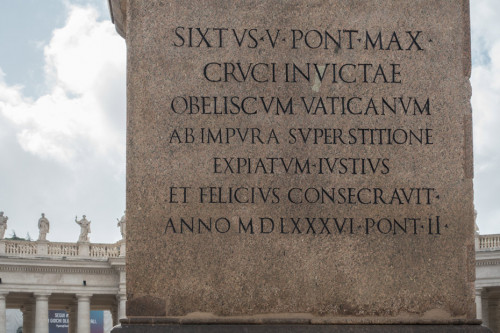
Obelisk Vaticano, inscription praising Pope Sixtus V.
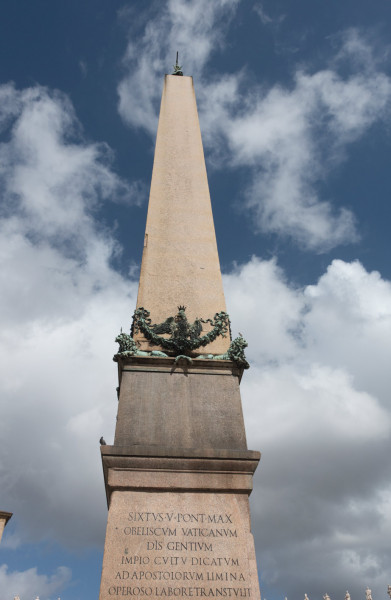
Vaticano Obelisk, Piazza di San Pietro
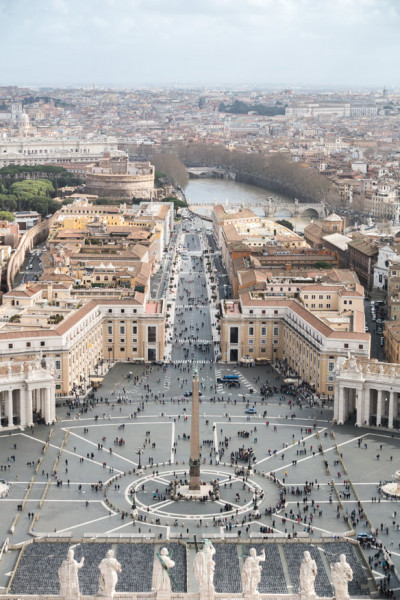
Vaticano Obelisk and St. Peter's Square
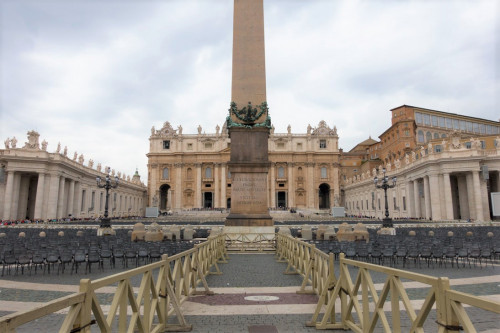
Vaticano Obelisk against the facade of the Basilica of San Pietro in Vaticano
It saw more than its share of events – chariot races, persecutions of Christians, the construction of the Constantine Basilica, the erection of Michelangelo’s dome, the fervor of the construction of Bernini’s colonnade, as well as the feverish pace of construction works during the times of Mussolini. It can be said that it is as old as the Roman Catholic Church since it arrived in the city on the Tiber only a few short years after the death of Christ. But in reality, it is much older, thirty-three centuries to be exact.
It saw more than its share of events – chariot races, persecutions of Christians, the construction of the Constantine Basilica, the erection of Michelangelo’s dome, the fervor of the construction of Bernini’s colonnade, as well as the feverish pace of construction works during the times of Mussolini. It can be said that it is as old as the Roman Catholic Church since it arrived in the city on the Tiber only a few short years after the death of Christ. But in reality, it is much older, thirty-three centuries to be exact.
This original, Egyptian obelisk today found in the central point of St. Peter's Square, was brought to Rome on a ship specifically constructed for this purpose, by Emperor Caligula (37-410. Its transport from Alexandria was quite a challenge: it was about 25 meters high and weighed 487 tons. Similarly to other obelisks brought from Egypt, it was to bestow fortune and prosperity to the emperors, it was after all a symbol of the rays of the sun – an emanation of God himself. It found its initial place in Rome in the central part (spina) of a private circus planned by the emperor, on the southern side of the yet nonexistent St. Peter's Basilica. However, Caligula never witnessed the games or shows, and most of all the favorite pastime of Romans, the chariot races that took place within. The construction of the circus was finalized by his successor – Emperor Nero, during whose reign it was also an area bearing witness to the persecution of Christians. It is there, that according to the legend, the later patron of the city and the most important apostle – St. Peter – was to have been crucified.
At the turn of the II and III centuries, the circus no longer entertained Romans. Neglected and unused, it fell into ruin. In time the world of antiquity turned into a Christian world, while the circus was forgotten becoming a sort of a stone quarry, from which construction material was obtained. It was finally taken apart in the IV century, while, the early-Christian Basilica of San Pietro in Vaticano was erected adjacent. Only the soaring, finished off with a sphere obelisk still remained and recalled pagan times. Surprisingly enough it did not collapse as did other Roman obelisks. It was oblivious to earthquakes, boggy terrain, and a lack of conservation as if it was deeply rooted in the area which was part of the former circus. And even the construction of a new basilica, inaugurated by Pope Julius II, at the beginning of the XVI century, and new foundations created for the construction of a new sacristy did not bring about its downfall. It continued to proudly stand reminding all of former glory. Many times it was supposed to be moved to a different location, but nobody was willing to undertake this feat. It was not until Pope Sixtus V at the end of the XVI, who decided to transport it and place it in front of the still-unfinished new St. Peter's Basilica. This task fell upon the shoulders of the principal papal architect Domenico Fontana. It required knowledge and sensitivity, but most of all courage, which reportedly even Michelangelo lacked.
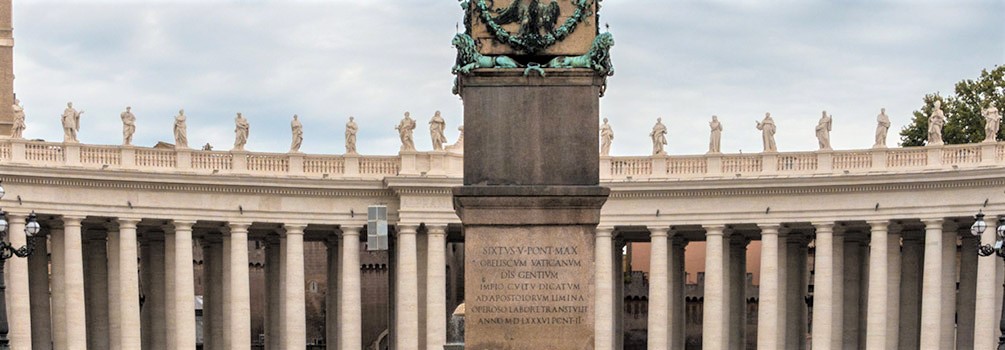
Works on moving the obelisk began in April 1586 starting with the strenuous, seven-year-long process of taking the colossus out of the ground using a specially built machine pulled by horses. We must remember, that at that time St. Peter’s Square (Piazza di San Pietro), adorned with Bernini’s colonnade, still did not exist, while its future location was an open space, in the center of which 800 workers, with the use of 47 winch cranes and 140 horses, after 4 months of tedious work, finally reached their destination on September 10th. At that time the obelisk was mounted on a previously prepared eight-meter pedestal. Hundreds of onlookers, deep in prayer, participated in this grand event. Fontana blew a trumpet, thus giving a signal to begin pulling. After many hours of work in deathly silence, the square was filled with shouts of joy. The undertaking was brought to a final. Church bells sounded all over the city, the pope consecrated the obelisk, held Mass, and blessed the workers who took part in this task. The Bishop of Rome ordered a cross to be placed on top of the obelisk, while the sphere, which was to contain Caesar’s ashes (which proved to be false) was filled with the relics of the Holy Cross. In this way, the entire obelisk, along with the pedestal and the cross measured nearly 40 meters. On its four sides, the papal coats of arms and inscriptions were placed. They praise the name of Christ, defender, and victor ("the Lion from the tribe of Judah won"), inform of the pope's work and recall (false information) about the initial founders of the obelisk (Augustus and Tiberius); finally, they also tell the story of an unworthy pagan cult, which the monument served and from which it was freed by pope Sixtus V, in the second year of his pontificate.
Folk tradition says that whoever is able to walk between the obelisk and the pedestal shall have his sins absolved. However, we should not harbor any hopes, it is a space of only a few centimeters. But, it is worth taking a closer look at this passage between the two shafts, to appreciate the engineering talent of Domenico Fontana.

























